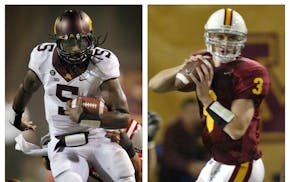I see the remarkable fox images by the Star Tribune's David Joles that appear with these words as a kind of street photography.
They're candids of creatures living their lives out and about in their neighborhood. The spaces in which the foxes hunt and play and rest and run belong as much to them as they do to us. Like this brood, urban creatures are our neighbors.
These photos are the fruits of a summer spent getting to know the foxes. Joles tells of before-5 a.m. wake-ups and multiple visits in the quiet hours of the morning when the animals were most active. Joles learned the foxes' habits. Most mornings, he said, he easily found them.
"Each time I did, I was struck by how at that moment I felt like I had been given an amazing gift," he added.
Joles pays that gift forward with these wonderful captures, and we gratefully take them in. But let's not stop there.
We need not only rely on a photographer's eye to get to know the critters around us. Our eyes and ears, and a willingness to sit still for a while are all that's required to become acquainted with the lives in our yards and parks and streets. We're alert to new goings-on and see more closely those everyday behaviors that we assumed we understood.
I've been a fox-watcher, too. This summer for a story for the Northeaster newspaper in mid-July, I staked out a fox family in a northeast Minneapolis park. I watched them stalk birds and squirrels, skulk in the brush, and wrestle in a wide-open grassy area while a watchful parent rested. I witnessed scenes much like the ones Joles so skillfully caught.
The experience opened up other connections. I also met the foxes' human neighbors. I talked with the former parks commissioner in whose yard they chose to dig their den; with a couple who planned their evening walks around the foxes' appearances; and with dog walkers who shared that the young kits were curious about their pets and sometimes would approach them. There was a sense of community in that park — a community that included the foxes.
Driving away on my last morning at the park, I swerved to avoid a dead squirrel, and immediately imagined one of the kits trotting into the busy street to check the roadkill.
So I pulled over, grabbed a plastic bag from the car, and scooped up the squirrel. I could feel its warmth through the bag. I inspected it carefully. Aside from a little blood on its mouth, it appeared to be healthy, and simply a victim of bad timing.
And then I had this thought: Those foxes had brought me much pleasure, as well as a paycheck. Maybe they'd like a gift.
I walked the block back to the park, looking over my shoulder, afraid that someone who had seen me around the past month would think I was baiting the foxes for a photo op. I dropped the squirrel in the brush and headed home.
I'm still not sure if that was the right thing to do. Perhaps there was a downside for the foxes that I hadn't considered. One thing I am certain of, though, is that hanging out with the foxes for a month had me thinking like a fox.
That's one of the biggest payoffs of paying attention, not only for us, but for the lives around us: We start to see the world through the eyes of the creatures we watch. In getting to know them, we come to care about their well-being. We're more alert to dangers that might come to them. We move beyond "live and let live" to "live and protect."
You don't need to find a fox family to expand your sense of community. Take the time to sit on the back steps to learn what the squirrels and birds are really doing. Watch the orb weaver spin her elegant trap across the front entrance. Then, use the back door instead of taking out the broom. Put on your reading glasses and check out the bugs in the garden. I know from experience that surprises lie there.
Get to know your neighbors.
Karen Kraco is a freelance writer and high school science teacher who lives in Minneapolis.

Former Gophers football standouts embrace being basketball dads

Reusse: Once-formidable Twins starting rotation vulnerable without López

Twins lose second in a row to Blue Jays as bullpen falters late
What is the 'House settlement,' and what does it mean for the Gophers and NCAA?
